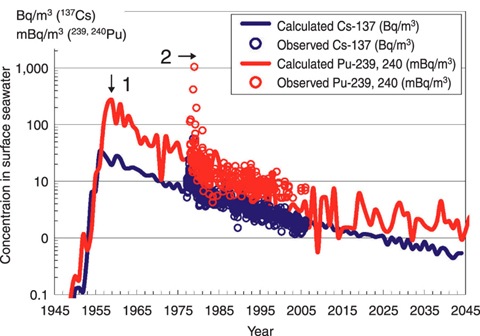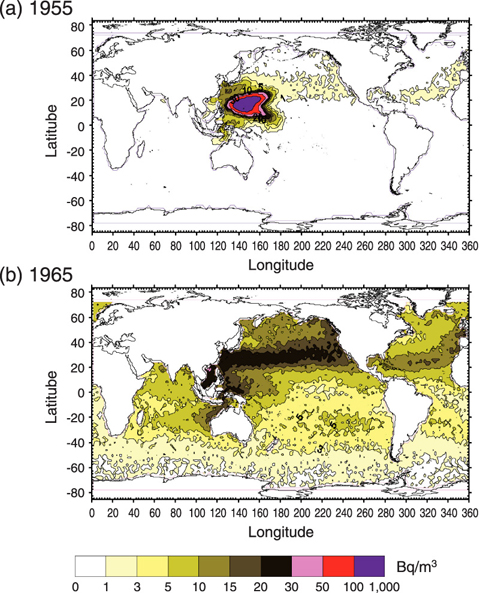
Fig.12-7 Ch anges in the cesium-137 (137Cs) and plutonium-239, 240 (239,240Pu) concentrations in the surface seawater collected off the shore of Tokai

Fig.12-8 Contour maps of the 137Cs concentrations in the surface seawater calculated by LAMEL in (a) 1955, and (b) 1965
For risk assessment of nuclear cycle facilities and worldwide environmental conservation, it is important to grasp how radioactive materials (e.g. 137Cs, 239,240Pu, etc.) will disperse in the marine environment in an accidental marine release of liquid radioactive effluent from a nuclear cycle facility. We have developed the LAMER (Long-term Assessment Mod El of Radionuclides in the Oceans) program, and validated LAMER's worldwide diffusion model using the fallout of 137Cs and 239,240Pu from past atmospheric nuclear tests.
LAMER consists of a Part A, which calculates the decadal behavior of radionuclides in marine environment, and a Part B, which calculates the risk from the intake of marine products considering the concentration, intake amounts of marine products and dose coefficients. The worldwide diffusion model in Part A for worldwide marine assessment of liquid radioactive effluent was developed and validated for use over a long period.
This worldwide diffusion model is required to be able to assess the long-term and worldwide effects, not only for a soluble element (Cs) but also an insoluble element (Pu). In order to satisfy this requirement, the computer programs to calculate three-dimensional velocity fields by an oceanic general circulation model, horizontal and vertical transport of soluble elements by an advection-diffusion model, and vertical transportation of insoluble elements by a scavenging model were developed.
The precision of this worldwide simulation model was validated by the observed data of atmospheric nuclear fallout. Over 80 percent of 152 calculated 137Cs profiles agreed with the observed 137Cs profiles reported by other organizations. The calculated data around the Tokai Reprocessing Plant also agreed with our environmental monitoring data. This means that the 137Cs in seawater near the Tokai Reprocessing Plant originated not from the plant but from the fallout (Fig.12-7). This model will be useful in monitoring for a new radioactive source in the ocean, since this simulation can forecast the future background level from fallout. Additionally, with this model it is possible to visualize how a radionuclide is dispersed by the ocean current, as in Fig.12-8.